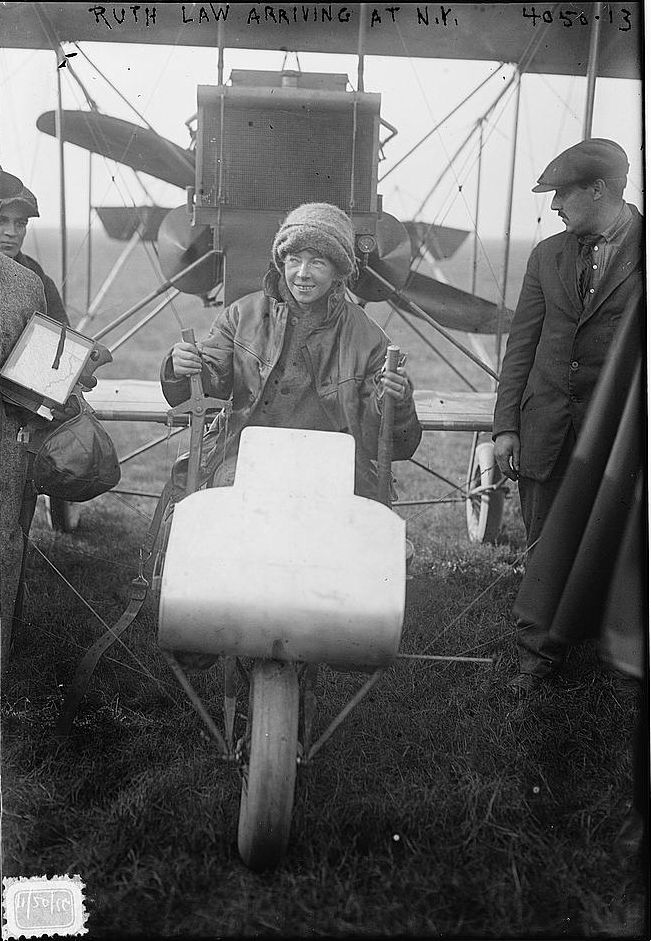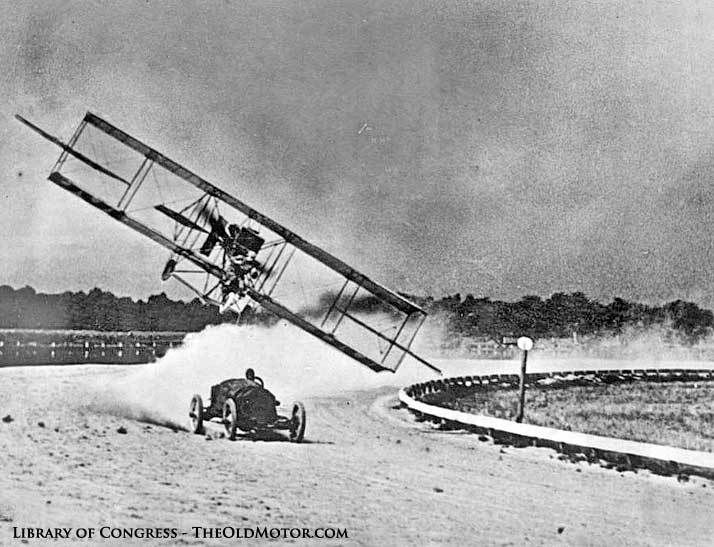Ruth Bancroft Law bought her first airplane in 1912 from a guy named Orville Wright. 21 at the time, the Lynn, Massachusetts native routinely called the feeling one experiences in flight “indescribable,” yet managed to describe it pretty well to the Christian Science Monitor, saying of her first flight: “I had the sensation of being shot out of a gun, as we rose from the earth. Then, slowly, I grew used to the feeling, and the joy of rising up into the air and watching the earth recede took possession of me. There is a great sense of the noise of the machine at first, but soon even that seems to fall off behind. The wind against the face is splendid, and to watch the villages, towns and cities, just pretty patches on the earth, from that nearness to the fleecy clouds, gives a spice to the sport that I find in nothing else."
She would go on to dazzle county and state fair crowds with daring aerobatic maneuvers including “loop the loops.” In 1916 she flew to 11,200 feet, a record altitude for a woman. Yet the same year, when she aspired to make the first-ever flight from Chicago to New York, the aviation world scoffed, regarding a woman as incapable of enduring the prolonged cold and fatigue. Moreover, they doubted her diminutive, outmoded 100-horsepower Curtiss pusher biplane. As did she. She tried to upgrade to a larger plane, but Curtiss Aeroplane president Glenn Curtiss refused, telling her it "was too much for a girl to handle."
Still, on Sunday morning, November 19, 1916, in Grant Park, Illinois, she tried. The cold made starting the biplane’s engine an ordeal, then fifty-mile-per-hour winds delayed her departure. When she finally prepared for takeoff, her mechanic began to sob, certain she would be killed. Nevertheless, at 8:25 a.m., she launched into biting elements against which her cockpit offered no protection. Over the next five hours and fifty-five minutes, she flew 590 miles before landing in Hornell, New York, shattering the previous American cross-country record of 452 miles.
From Hornell, Law flew to New York City, where she was met by a throng that included brass bands, an Army garrison on parade and a crowd of fifty newspapermen, one of whom asked, "You have made the longest flight a woman ever made, haven't you?" She replied, "I have made the longest flight an American ever made." President Wilson would call it, "the greatest flight ever made in America," adding that Law was "a great little flier."
Law’s aviation accomplishments didn’t end there. At the Canadian National Exhibition in 1918, she famously raced her biplane against a car driven by racing champion Gaston Chevrolet. The following year she broke the record for altitude (14,700 feet). Meanwhile, with her Ruth Law Flying Circus barnstorming troupe, she earned as much as $9,000 a week. In 1920, at age 32, she retired from aviation. Why? "Because I'm a normal woman and want a home, a baby, and everything else that goes with married life," she said. "Why, I've been married for almost 10 years to Charlie Oliver, the man who has managed my exhibitions, and scarcely anyone knew who he was. And the poor boy was so worried about me all that time that every time I went up he lost a pound. Of course, I'm just crazy about flying, but one's husband is more important."

Ruth Law arriving in New York City in 1916—Library of Congress

Race at the 1918 Canadian National Exhibition
